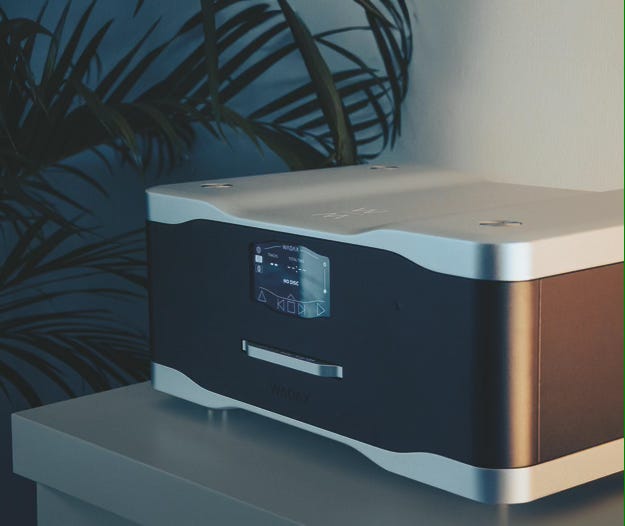As with everything in this crazy world of audio, there are several ways of looking at the WADAX Studio Player. On the one hand, it’s a CD/SACD-playing streamer, built around a modular and upgradable platform. On the other, it’s the result of a vast amount of trickle-down technology from the ultimate expression of WADAX-ness. On the third hand (!), it’s an expensive digital product with a comparatively narrow, but specialist, feature set. And on that fourth and final hand, it’s a new entry into an ever-increasing and contended market. It’s all those things!
Let’s start at the genesis of the Studio Player. WADAX makes the Atlantis Reference digital system; a Server, DAC and power supply that set several benchmarks. Even disregarding technical performance, the elaborate Atlantis system sets the bar high in terms of size, weight, number of boxes, and – at least, until recently – price. The Studio Player takes the same DAC board with the same musIC feed-forward error correction system found in the Atlantis Reference DAC and plants it in the Studio Player. That’s like getting a Maybach for the cost of a Mercedes-Benz A-Class.
Supply and demand
Things are not quite so clear-cut. Yes, the two share the same digital architecture to the point where you could theoretically swap boards between the two, but a big part of why the Atlantis Reference lives up to its name – and justifies its price tag – is the giant twin power supplies that it uses. These take up more shelf space and weigh more than the Studio Player itself. These power supplies help shape the ultimate performance of the Atlantis and without them – and the mechanical architecture of the Atlantis – the DAC can only achieve perhaps 90% of what it’s capable of. However, getting 90% of the performance for about 10% of the cost doesn’t sound like a compromise too far.
In both devices, WADAX features its unique musIC process, a sophisticated feed-forward error correction system that operates in the time domain. By mapping the error mechanisms of a chosen DAC chip under load using Adaptive Delta Hilbert Mapping, WADAX has developed an algorithm that examines the incoming signal and calculates the induced error (both linear and nonlinear) that will result. By applying an inverse signal at the input, the company’s musIC system corrects time and phase errors in real time.
Keep reading with a 7-day free trial
Subscribe to The Absolute Sound to keep reading this post and get 7 days of free access to the full post archives.





